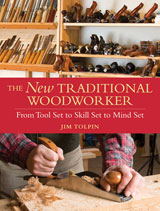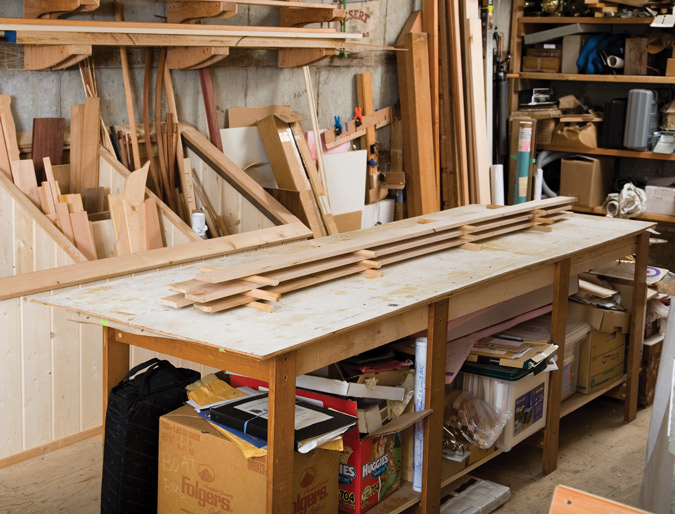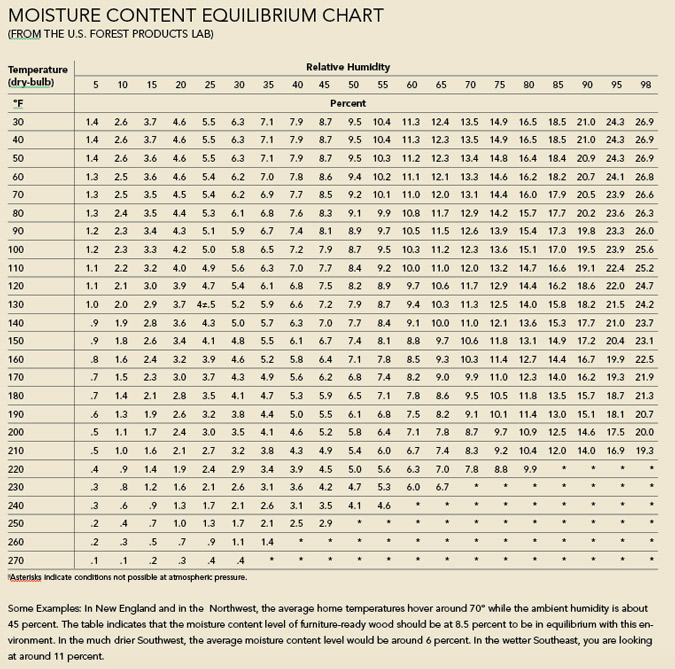We may receive a commission when you use our affiliate links. However, this does not impact our recommendations.
Whether you buy your furniture wood from a specialty hardwood lumberyard or from a local sawyer, the chance that the wood is ready to go into a piece of furniture with a minimum risk of shrinking (or, rarely, expanding) unduly is just about nil. Instead, it’s more likely (at least in
most areas of the United States) that the wood has been sitting in an unheated space and is, at best, in equilibrium with the ambient moisture content of the outside environment — even if
the wood has been kiln dried. That’s not good.
You want the wood in your furniture piece to be in equilibrium with your area’s typical home environment.
Luckily, it’s not that hard to get it that way — it just takes a little time and forethought. In my neck of the woods, the hardwood lumber at the dealers sits in an unheated warehouse where humidity generally reaches about 11 percent to 12 percent as measured by an electric moisture meter. I need to get the wood to around 8 percent to 9 percent (the point at which it will be in equilibrium with our regional home’s environment of around 70° and an ambient humidity of 45 percent — according to the chart produced by the U.S. Forest Products Lab as shown in chart below).
To accomplish this, I have gotten into the habit of purchasing the wood at least two to three weeks ahead of time. I carefully stack the wood on a flat surface in my shop with stickers set in between each board to allow the air to circulate and the wood to “breathe.” Because my shop is in my house (one of the joys of a hand tool-primary woodworking shop), I can get away with stacking it here because the shop enjoys the same environment the furniture will live in. If your shop is damp and/or marginally heated, you will want to stack the wood inside your house somewhere until you are ready to work with it. If your project is going to have to endure periods of inactivity, get in the habit of bringing the workpieces back into the house between work sessions.
 Excerpted from “The New Traditional Woodworker,” by Jim Tolpin.
Excerpted from “The New Traditional Woodworker,” by Jim Tolpin.
Here are some supplies and tools we find essential in our everyday work around the shop. We may receive a commission from sales referred by our links; however, we have carefully selected these products for their usefulness and quality.












Hi
I live in northern California (Redding) where outside summer high daily temperatures tyipcally are in 90s to low 100s with low humidity 15-20 percent, and winter high daily temperatures can range from high 30s to 60s with high humidity 70 percent or more. The above translates to in house seasonal variations in temperatures of high 60s to low 80s and in a relative humidity that ranges from about 15 to 60 percent. So unless I totally climate proof my house (unreasonable) I am never sure what would be the best time to try to acclimate wood. Any suggestions?
Would this same process apply to manufactured wood such as plywood and MDF?